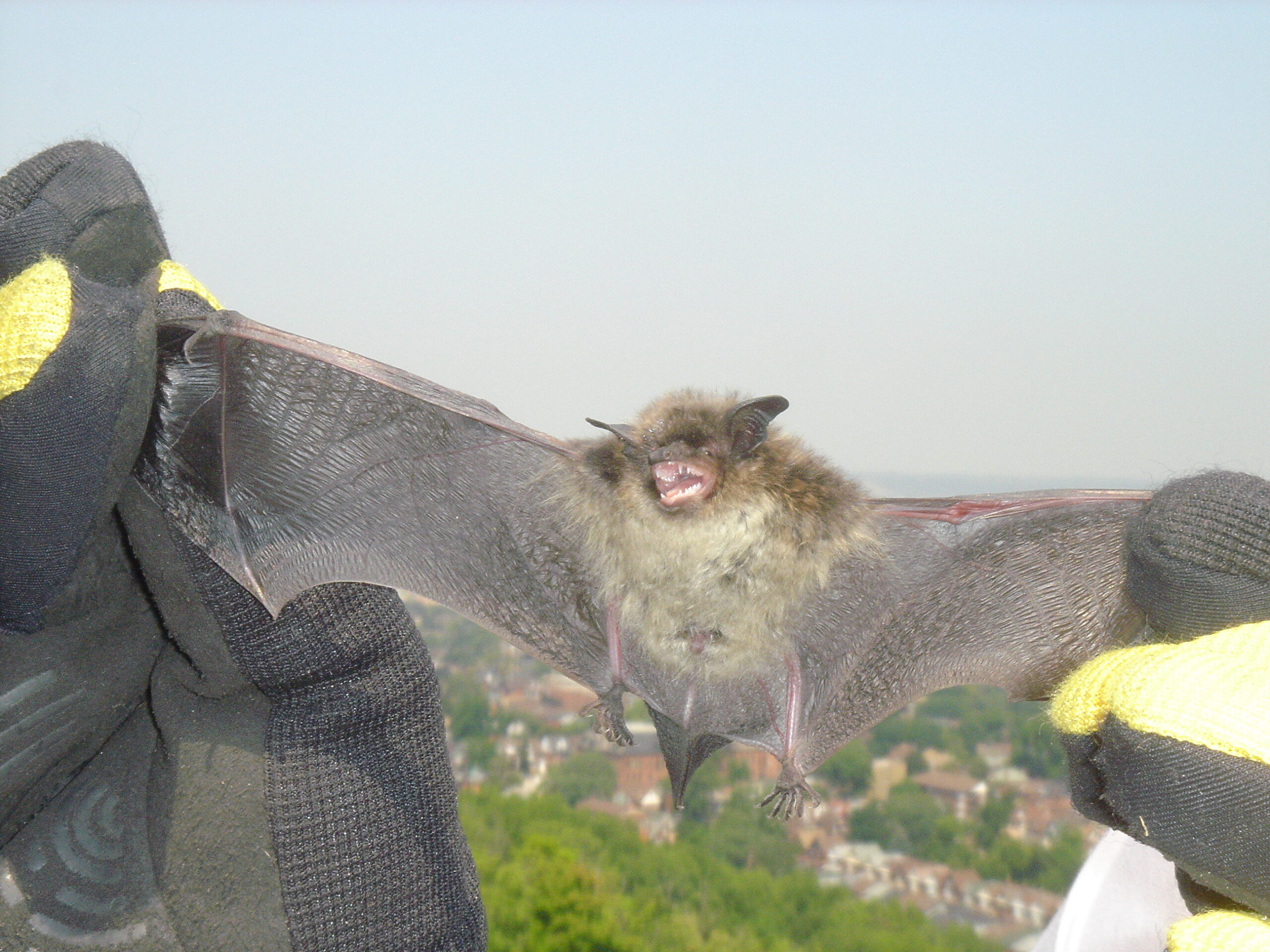Humans are not the only species to make summer plans. Have you ever considered what a bat does from June to August? If raising a family in your attic is on a bat’s to-do list this year, here are some facts you need to know to help with bat wildlife control services in Oshawa.
Bat Species
Canadian bats range in size from 7 to 15 centimetres long and can be brown, black, reddish, or silver in colour. The following eight types of bats live in Ontario:
- Hoary
- Eastern red
- Silver-haired
- Big brown
- Eastern small-footed
- Tricoloured
- Little brown myotis
- Northern long-eared myotis
Little brown, big brown, and tricoloured bats are suited to urban and suburban areas, although tricoloured bats are extremely rare and considered endangered in Canada. The other five species live in forests, so they are not often seen.
 Spring Arrival
Spring Arrival
Bats cannot survive in winter when there is little food available, so you are not likely to see a bat during the colder months. Some species migrate to warmer climates for the winter like birds do while others sleep the winter away in nearby caves. Only the big brown bat prefers to hibernate inside buildings. The first bats flying overhead in April are a sure sign of spring.
Hunting Behaviour
Whether they return to Ontario from afar or wake up after hibernating locally, bats come back to their summer homes hungry and thin. They hunt enthusiastically, eating 25% of their weight in insects during the first half-hour after arriving. Each bat will continue killing 6,000 to 8,000 mosquitoes and agricultural pests per night, saving the North American economy approximately $3.7 billion in pest control each year.
Maternal Colonies
Females generally begin the summer already pregnant. Thus, one of the first tasks for females is to find a suitable place to form a maternal colony where they can raise their families. For species accustomed to living near humans, a warm, dry, and spacious attic seem like the perfect location. Here, the females can sleep during the day and then leave their babies for short periods as they hunt their body weight in insects each night.
Baby Bats
The first babies are born in late May, shortly after Victoria Day. Each mother generally has one pup at a time but may have one or two more later in the summer. Just like other mammals, the mother nurses her helpless baby and can recognize it by the smell in a crowded colony. Baby bats begin to fly by mid-July but are still dependent on their mothers through August.
Fall Departure
About the time that human children go back to school in the fall, young bats are emerging from their colonies and hunting on their own. The bats will spend the early fall eating as much as possible to help them survive the winter. You may not be happy that you hosted a colony of bats during your summer, and you may be left with an attic full of guano, which can be toxic to humans. Having the area properly decontaminated is important for the health of your household. However, the good news is that once the Equinox is past and leaves begin to fall, the bats in your attic will have disappeared from sight until next spring.
Bat Advice
Once a maternal colony is established, it is inhumane to remove the bats or to prevent mothers from returning to nurse their helpless babies by blocking entrances. The young will die, and it may be difficult to remove them from inside the walls. The best thing to do is to call our Oshawa Skedaddle team for complete humane wildlife control services. Once the bats leave, we can clean up the guano and remove any dead bats. We will then block entrances to keep bats from interfering with your summer plans next year.




